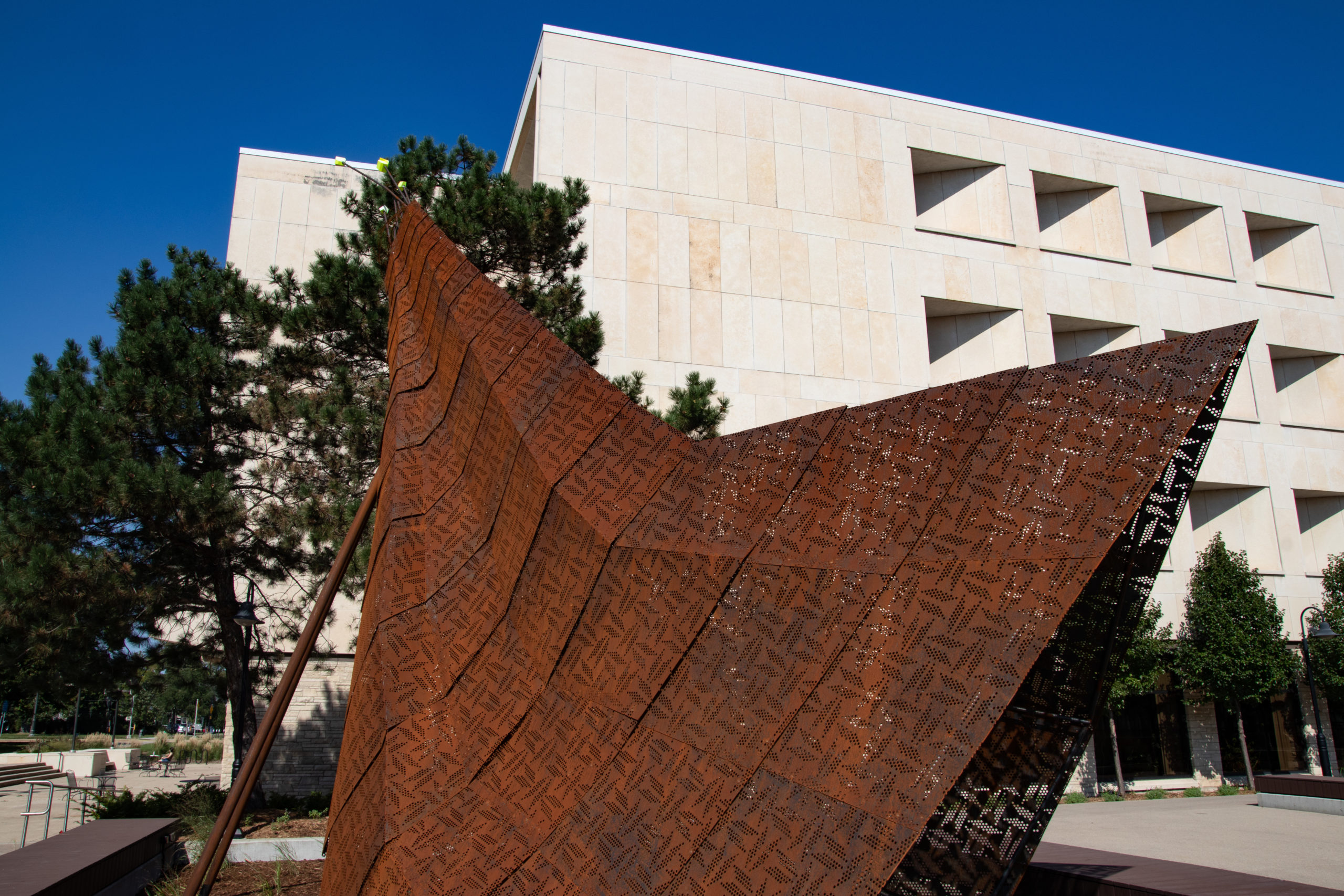Lawrence University’s annual Indigenous People’s Day will be held on Monday, Oct. 11, from 5:30 to 7 p.m. on Main Hall Green. This will be the sixth annual celebration organized by the Lawrence University Native American Organization (LUNA).
The day supports Lawrence’s ongoing commitment to “Indigenize Education” and “to hold space for Indigenous knowledge to be valued and to hold space for Indigenous students to practice their culture,” according to LUNA President and senior Taneya Garcia.
“The day celebrates Indigenous people and their heritage, something that is very often forgotten by settlers and occupiers of this land,” Garcia said. “The day is instrumental in the reminder of the fact that Lawrence University’s Appleton and Door County campuses are on the ancestral homelands of the Menominee and Ho-Chunk people.”
LUNA’s celebration annually highlights different aspects Indigenous cultures. This year, the event will include the unveiling of the new Otāēciah sculpture, a pow wow demonstration, speeches from Menominee elders and Native American food cooked by Bon Appetit.
The Otāēciah unveiling is the highlight of this year’s Indigenous People’s Day. The steel sculpture is situated between Seeley G. Mudd Library and Wriston Art Center.
Designed by Chris T. Cornelius, the sculpture plays a larger role in the reminder of Lawrence University’s commitment to recognizing the contributions of Indigenous people. Cornelius, who is a citizen of the Indigenous Oneida Nation of Wisconsin, named the sculpture for the Menominee word for “Crane,” which is one of the traditional Menominee clan symbols. The sculpture and the new plaza will act as a memento for the people whose lands were stolen and symbolize their strength and heritage over time, Garcia said.
The renaming of the plaza between the two buildings will also play a significant role in the events of the day. Kaeyes Mamaceqtawuk Plaza will be the name of the space that contains the sculpture. Kaeyes Mamaceqtawuk translates to “Ancient People,” which is the name the Menominee people called themselves before the name “Menominee” was given to them. The creators hope that more people will get into the habit of using these names. The renaming of the space is in recognition of Lawrence’s occupancy of ancestral Menominee land.
The Pow-wow dances hold myriads of cultural and historical significance to the Native Americans, Garcia said. Considering dancing was one of the first aspects of Native American culture to come under criticism, it celebrates their hardship. The dance brings together Natives and allows them to celebrate their tribal traditions and cultures. Performed by the Oneida Nation Drum/Dance Group, it expands on the relationship one shares with the land it occupies said, according to Garcia. A master of ceremonies has been invited to come and explain the significance of each dance.
Menominee nation elder, Denis Kenote, will also be coming to speak on the significance of the land and the relationships Native Americans have with the land. Kenote will share his thoughts on how one can incorporate Indigenous practices into their life and what it means to indigenize one’s mind.
“All our efforts are to recognize how colonization has disrupted our practices and thinking,” Garcia said. “We must rebuild that in the best way that we can. Indigenous People’s Day is an opportunity to focus on that. Furthermore, to indigenize the colonial spaces we occupy.”
Unlike previous years where students would cook for the event, Bon Appetit will be providing the food this time, and they have taken authentic recipes from an Indigenous cookbook. This change is in the expectation of a greater audience this year.

